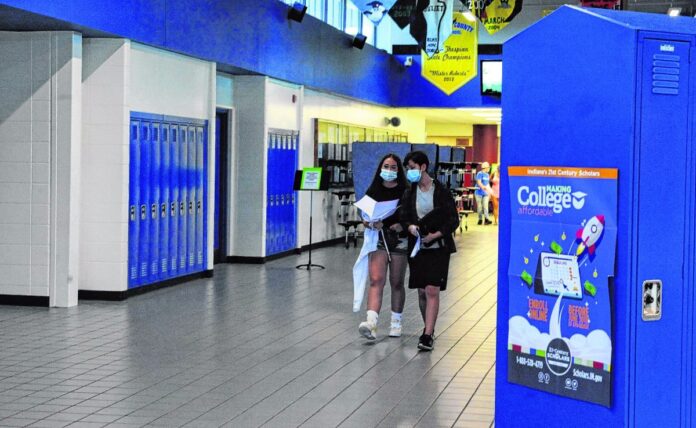
Changes have been made to the Brown County High School handbook to address the use of cellphones, dress codes, and the way school rules are presented.
The school board approved the changes on June 24.
The handbook outlines rules, procedures and other important information for students, like graduation requirements and work permits.
No cellphones will be allowed in class unless they are being used for an assignment. Cellphones will be allowed before and after school, in the hallways and in the cafeteria.
Brown County High School Principal Matt Stark said the change came from students and staff who reviewed the handbook.
“They said it was disruptive when students are playing games as opposed to doing the assignment they are supposed to do. This gives backing to our teaching staff, who asked for a more uniform policy across the board,” Stark said.
The school’s Students for Equity group and all staff went through the handbook for this school year and recommended changes.
“We have found things we haven’t looked for in probably six or seven years that were still in there, like, you cannot use the payphone in front,” Stark said. “That was still in there. Not sure how we missed that, but that is gone now.”
Other noticeable changes will be to school rules and dress codes.
Expectations
The school is moving away from telling its students what they “shall not” do, instead explaining the expectations they have of them as young adults in the building.
In 2019, the school district received a five-year, $5.5 million federal grant from the National Institute for Excellence in Teaching, and part of that money funded professional development, where the culture and climate of a school was discussed — “going away from the ‘shall nots’ and ‘will nots’ and into more, ‘This is the expectation on how you conduct yourself and how you’re supposed to do things,” Stark said.
The high school sent out surveys asking for suggestions on what students would like to see in handbooks. “This is very reflective of that,” Stark said.
“It is a rewording. There are some things that are very similar, but trying to reword it in such a way that it is more appropriate for the high school level in talking about expectations.”
For example, last year’s school handbook stated: “Once students are on school property, they shall enter the building and not leave campus without permission from the office until the end of the school day.”
Now it states: “Enter and remain in the building when you arrive on school property until the end of the school day, unless you have permission from the office to leave.”
Dress code
The dress code has remained relatively the same, with the exception of removing a requirement that shirts have to have sleeves. Also, students can now wear a hat or a cap as long as students are still identifiable.
The dress code also “is getting away from language that identifies more because of gender, and trying to be non-identifying as far as dress code, so it is equitable across the entire student body,” Stark said.
Shorts or skirts used to be required to hit mid-thigh or longer; that requirement no longer exists.
“It’s not targeted towards females on how they dress and is more a general piece. That was a big thing for Students for Equity and our staff as well, as we’re talking about continuing to evolve in diversity, equity and inclusion to try to be more inclusive of all people,” Stark said.
Speech
This school year’s handbook also includes an expectation regarding student and staff speech, including on social media. Social media speech was not mentioned in last school year’s handbook.
Speech should be “respectful, free of profanity, racial, ethnic, religious, able-bodiedness, sexist or LGBTQIA+ slurs, or other language and symbols that creates a negative environment for another individual.”
“This is talking about during school hours,” Stark noted.



